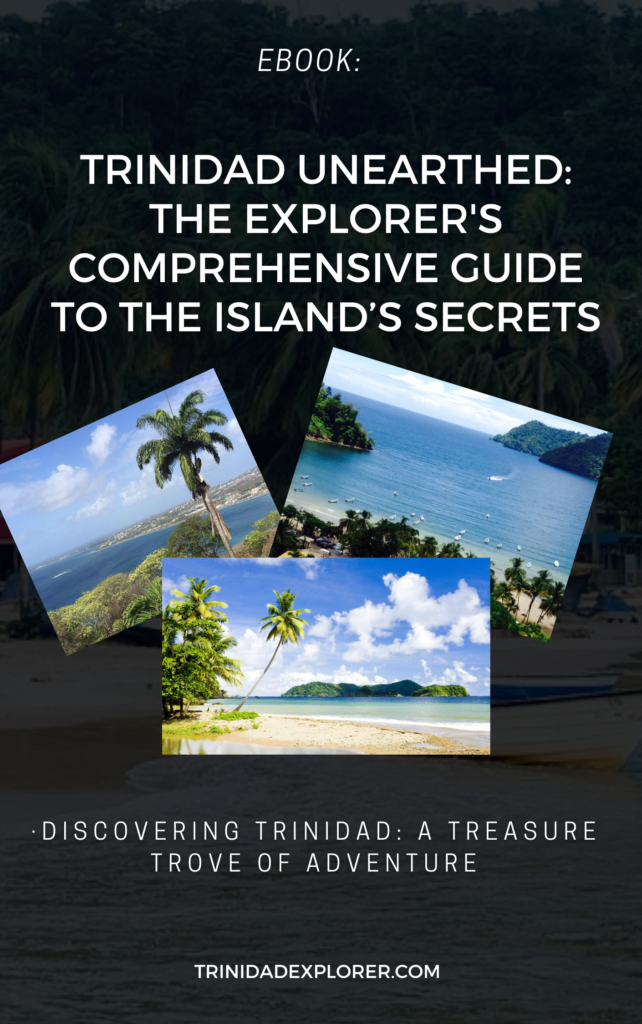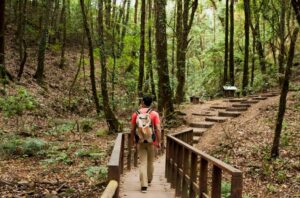Nestled in the heart of the Caribbean, Trinidad, a jewel of natural splendor, emerges as an unexpected haven for stargazing enthusiasts. This tropical paradise, known for its vibrant culture and diverse ecosystems, also boasts of a night sky so clear and unspoiled, it becomes a canvas for the celestial wonders above. As night falls, the hustle of daily life gently fades, unveiling a celestial spectacle that captures the imagination and awakens the soul.
In Trinidad, the unique geographical position, away from the bustling urban lights, creates an atmospheric clarity rarely found elsewhere. This clarity not only enhances the visibility of the twinkling stars but also allows for an unobstructed view of the Milky Way, meteor showers, and even distant planets on a clear night. The experience of stargazing here is not just about witnessing the beauty of the night sky but about connecting with the universe in a profound and personal way.
The importance of finding the perfect spot for stargazing in Trinidad cannot be overstated. It is in these serene and secluded locations that one can truly appreciate the majesty of the night sky. Whether atop the rolling hills, beside the calm of the sea, or within the heart of the lush rainforest, each spot offers a unique backdrop to the cosmic show above. The journey to these spots is as much a part of the experience as the stargazing itself, offering a chance to explore and connect with the natural beauty of Trinidad.
As we embark on this celestial journey through Trinidad’s best stargazing spots, we invite you to embrace the wonder of the stars. Prepare to be enchanted by the stories they tell and the secrets they hold, as we uncover the most magical places on the island to gaze upwards and dream under the starlit Caribbean sky.
1: Why Trinidad is a Stargazing Paradise
Trinidad, an island nation nestled in the southern Caribbean, is a celestial wonderland, a place where the stars seem to shine brighter and the night sky reveals its glory in a spectacular display. But what makes Trinidad such a perfect spot for stargazing? The answer lies in its unique climate and geography, along with its areas of low light pollution and clear skies.
Favorable Climate for Stargazing
The climate of Trinidad is predominantly tropical, characterized by warm temperatures and clear skies for most of the year. This tropical setting is ideal for stargazing, as it allows for more nights with clear skies and fewer interruptions from cloudy weather. The minimal seasonal variation means that, irrespective of the time of year, the chances of encountering a night perfect for observing the stars remain high. This consistent weather pattern ensures that both amateur and seasoned stargazers can enjoy the night sky with regularity and predictability.
B. Unique Geographical Advantages
Trinidad’s geography plays a pivotal role in its stargazing allure. The island’s varied landscapes, from serene beaches to lush hills and mountains, offer multiple vantage points for observing the night sky. These elevated areas, in particular, provide a panoramic view of the heavens, unobstructed by terrain. Additionally, the location of Trinidad, being far from the equator, allows for a unique perspective of the celestial sphere, showcasing a diverse array of constellations and celestial events that are not visible from higher latitudes.
C. Areas with Low Light Pollution
One of Trinidad’s most significant advantages for stargazing is the presence of areas with exceptionally low light pollution. Away from the urban centers, the island harbors spots where the darkness is profound and the night sky reveals itself in its full glory. In these secluded areas, the Milky Way can be seen stretching across the sky, and shooting stars are a common sight. The absence of artificial light not only enhances the visibility of faint stars and galaxies but also contributes to a more immersive and awe-inspiring stargazing experience.
D. Clear Skies and Astronomical Visibility
The clear skies of Trinidad are a window to an array of astronomical wonders. On any given night, stargazers can witness a multitude of stars, planets, and even distant galaxies. The clarity of the sky also enhances the visibility of specific astronomical events like meteor showers, comets, and eclipses, turning them into spectacular displays. This exceptional visibility is a testament to the island’s pristine natural environment and its commitment to preserving the night sky.
2: Top Stargazing Spots in Trinidad
Trinidad, with its enchanting landscapes and clear skies, offers some of the best locations for stargazing. Each spot has its unique charm and offers a different view of the night sky. Here’s a guide to the top stargazing spots in Trinidad, complete with details on accessibility, the best times to visit, and the constellations you can expect to see.
Paramin Hills
Description: Nestled high above the bustling capital, the Paramin Hills offer a serene escape with minimal light pollution. The elevation provides a stunning, unobstructed view of the sky.
Accessibility: Accessible by car, though the roads can be steep and winding.
Best Time to Visit: Dry season (January to May) for clearer skies.
Constellations Visible: Orion, Scorpius, and around the spring equinox, the Leo constellation.
2. Las Cuevas Bay
Description: A tranquil beach setting, Las Cuevas Bay, is ideal for a peaceful night under the stars. The open ocean view complements the expansive sky overhead.
Accessibility: Easily accessible by car with ample parking.
Best Time to Visit: June to August for less rainfall.
Constellations Visible: Aquarius, Pisces, and the occasional glimpse of the Milky Way.
3. Chaguaramas Peninsula
Description: Offering a unique blend of sea and sky, the Chaguaramas Peninsula is perfect for those who enjoy stargazing with a gentle sea breeze.
Accessibility: Well-connected by road; popular for nighttime picnics and camping.
Best Time to Visit: During the new moon for the darkest skies.
Constellations Visible: Ursa Major and Minor, Cassiopeia.
4. Asa Wright Nature Centre
Description: Surrounded by lush rainforest, this spot is for nature and astronomy enthusiasts alike. The darkness deep within the forest enhances the visibility of the stars.
Accessibility: Guided tours are available; some areas may require hiking.
Best Time to Visit: The dry season, particularly April and May.
Constellations Visible: The Southern Cross, Centaurus.
5. Mount Saint Benedict
Description: Known for its tranquil monastery and breathtaking views, Mount Saint Benedict is a serene location for stargazing.
Accessibility: Accessible by car, with quiet areas for setting up telescopes.
Best Time to Visit: Late dry season for clearer skies.
Constellations Visible: Andromeda, Pegasus in the autumn months.
3: Stargazing Tips for Beginners and Enthusiasts
Stargazing can be a deeply rewarding experience, whether you are a beginner just starting to explore the night sky or an enthusiast looking to deepen your astronomical knowledge. Here are some practical tips and suggestions to enhance your stargazing experience in Trinidad.
A. Essential Equipment for Stargazing
- Binoculars or a Telescope: While the naked eye can see many wonders, binoculars or a small telescope can greatly enhance your view. Binoculars are a good start for beginners, offering a wide field of view.
- Star Maps and Apps: Star maps or stargazing apps can help you navigate the night sky. Apps are particularly user-friendly and can be aligned with the sky above you for real-time identification.
- Comfort Items: Bring a blanket or a reclining chair for comfort during prolonged viewing. A red-light flashlight is also useful for maintaining night vision while reading star maps or setting up equipment.
B. Techniques for Successful Stargazing
- Allow Your Eyes to Adjust: Spend about 15-20 minutes in the dark to let your eyes adjust to the low light. This adjustment enhances your ability to see fainter stars and celestial objects.
- Learn Basic Constellations: Start by identifying major constellations and use them as a guide to find other stars and planets. Constellations like Orion, Ursa Major, and Scorpius are good starting points.
C. Maximizing Your Stargazing Experience
- Ideal Times: The best time for stargazing is typically on clear, moonless nights. Full moons can wash out dimmer stars, so plan around the lunar cycle.
- Weather and Conditions: Check the weather forecast for clear skies. Avoid nights with high humidity or haze, as they can obscure your view.
- Light Pollution: Seek out locations with low light pollution. Darker skies mean more visible stars. Trinidad’s remote beaches and hilltops are often ideal spots.
- Patience and Practice: Stargazing requires patience. Spend time under the stars, and your ability to identify celestial objects will improve.
D. Advanced Tips for Enthusiasts
- Photographing the Night Sky: If you are into astrophotography, invest in a good camera and learn long exposure techniques to capture stunning images of the night sky.
- Join Local Astronomy Clubs: Connecting with local astronomy clubs or groups can provide valuable learning opportunities and enhance your stargazing experience.
4: Capturing the Night Sky – Photography Tips
Photographing the night sky is an art that combines patience, skill, and a bit of technical know-how. Whether you’re aiming to capture the ethereal beauty of the stars, the graceful arc of the Milky Way, or the unique constellations visible from Trinidad, here are some tips and equipment recommendations to help you capture stunning night sky photographs.
A. Essential Equipment for Astrophotography
- Camera: A DSLR or mirrorless camera with manual mode capability is ideal. These cameras allow for adjustments in exposure, ISO, and aperture, which are crucial for night sky photography.
- Wide-Angle Lens: A wide-angle lens (with a focal length between 14mm and 24mm) is recommended for capturing expansive starry skies. Lenses with a large aperture (f/2.8 or lower) are preferable for more light intake.
- Tripod: A sturdy tripod is essential to stabilize your camera for long exposures, which are necessary for capturing clear, sharp images of the night sky.
- Remote Shutter Release: To avoid camera shake and ensure sharp images, a remote shutter release or your camera’s built-in timer is highly recommended.
B. Camera Settings for Capturing the Night Sky
- Manual Mode: Always shoot in manual mode to have complete control over your settings.
- Exposure: Depending on the darkness of the sky and the effect you want to achieve, exposures can range from a few seconds to several minutes. Experiment to find the best exposure time for your location.
- Aperture: Use the widest aperture your lens allows (e.g., f/2.8) to let in as much light as possible.
- ISO: Start with an ISO around 1600-3200. Higher ISOs can capture more light but can also introduce noise. Adjust based on the ambient light and your camera’s capabilities.
- Focus: Set your lens to manual focus and focus at infinity. It might be helpful to use live view mode to focus on a bright star or distant light for accuracy.
C. Techniques for Night Sky Photography
- Composition: Include elements of the landscape to give context to the sky and add depth to your photos.
- Long Exposure: For capturing star trails, use a longer exposure (upwards of 30 seconds). For crisp shots of stars and constellations, keep exposures shorter (less than 30 seconds) to avoid star movement.
- Trial and Error: Astrophotography often requires trial and error. Take multiple shots with different settings to find what works best for your current conditions.
D. Advanced Techniques
- Stacking: For more detailed images of the night sky, consider stacking multiple images using software like StarStaX or Adobe Photoshop. This technique reduces noise and brings out finer details.
- Time-Lapse: Create a time-lapse of the night sky by taking sequential images over several hours and then combining them into a video.
5: Conservation and Responsible Stargazing
Stargazing in Trinidad offers a window to the universe, but it also comes with a responsibility to preserve the natural environment that makes such experiences possible. Conservation and responsible stargazing practices are crucial in maintaining the pristine conditions of stargazing locations. Here are some insights into why conservation is important and tips on how to minimize your environmental impact while enjoying the night sky.
A. The Importance of Conservation in Stargazing
- Preserving Dark Skies: Light pollution not only diminishes our ability to see the stars but also disrupts wildlife and ecosystems. Protecting areas with dark skies is essential for both astronomical observation and ecological balance.
- Safeguarding Natural Habitats: Many stargazing spots are also habitats for wildlife. Responsible practices ensure these environments remain undisturbed and protected.
- Sustainable Tourism: As stargazing can attract visitors, sustainable tourism practices help in preserving these locations for future generations while also benefiting local communities.
B. Minimizing Environmental Impact
- Use Red Light Flashlights: Red light preserves your night vision and is less disruptive to wildlife. Use red light flashlights when navigating in the dark.
- Respect Wildlife and Nature: Stay on designated paths and avoid disturbing the natural surroundings. Be mindful of nocturnal animals and their habitats.
- Limit Light Pollution: If camping, use minimal lighting and ensure that your lights are shielded and directed downwards.
- Leave No Trace: Carry out all trash and belongings, and leave the area as you found it. This practice is crucial in preserving the natural beauty and cleanliness of stargazing sites.
- Educate Others: Share responsible stargazing practices with fellow enthusiasts. Educating others amplifies the impact of conservation efforts.
C. Advocating for Dark Sky Preservation
- Community Involvement: Get involved with local groups or initiatives aimed at preserving dark skies. Community efforts can lead to the designation of dark sky reserves or parks.
- Promote Dark Sky Friendly Lighting: Advocate for the use of dark sky-friendly lighting in your community, which can reduce light pollution significantly.
- Participate in Citizen Science: Engage in citizen science projects related to astronomy and the environment. These projects can provide valuable data for conservation efforts.
- Conclusion
- Our journey through the night skies of Trinidad has unveiled a world of celestial wonder, ripe for exploration and appreciation. From the serene Paramin Hills to the tranquil shores of Las Cuevas Bay, Trinidad offers a variety of perfect spots for stargazing, each with its unique perspective of the cosmos. The island’s favorable climate and geography, coupled with areas of low light pollution, make it an ideal destination for both amateur astronomers and seasoned stargazers.
- We delved into practical tips for beginners and enthusiasts, highlighting essential equipment, techniques, and the best times and conditions for stargazing. For those interested in capturing the night sky, we explored photography tips and techniques, emphasizing the importance of the right equipment and settings to capture the stunning beauty of the stars.
- More importantly, we discussed the critical role of conservation and responsible stargazing. Preserving the dark skies and minimizing our environmental impact are essential in maintaining the natural beauty and ecological balance of Trinidad’s stargazing locations. These practices ensure that these spots remain a source of wonder and inspiration for future generations.
- As we conclude, we encourage you to step out under the starlit Caribbean sky and immerse yourself in the beauty and mystery of the universe. Whether you are gazing up at the sparkling constellations, capturing the Milky Way in a photograph, or simply enjoying the tranquility of a night surrounded by nature, the experience is sure to be unforgettable. Remember, each clear night sky in Trinidad is an open invitation to explore, discover, and connect with the cosmos in a way that is both profound and exhilarating.
- Call-to-Action
- As we wrap up our celestial journey through Trinidad’s night skies, we extend an invitation to you, our readers. Share your own stargazing experiences, your discoveries, and the breathtaking photographs you capture under the starry canopy of Trinidad. Your stories and images are not just personal triumphs; they are beacons of inspiration, encouraging others to look up and embrace the wonders of the universe.
- We’d love for you to be a part of our growing community of stargazing enthusiasts. Whether you’re a seasoned astronomer or a curious beginner, your insights and experiences are invaluable. Share your stargazing adventures in Trinidad on social media, using hashtag #StarryTrinidad, and connect with fellow skywatchers.
- For those eager to dive deeper, our website offers a wealth of resources and further information about astronomy and the natural beauty of Trinidad. From detailed guides on the best stargazing spots to tips on astrophotography, and updates on upcoming celestial events, we’ve got you covered. Visit [YourWebsite.com] for more information and to join our vibrant community.
- Together, let’s continue to explore the night sky, cherish the natural beauty around us, and foster a community that values and preserves the celestial wonders for generations to come. The universe is vast and full of mysteries waiting to be unraveled. So, grab your binoculars, set up your telescope, and step into the night — the stars are calling.

The e-book ‘Trinidad Unearthed:
The Explorer’s Comprehensive Guide to the Island’s Secrets’, written by Aiden Ramnarine, A detailed guide to exploring the secrets and beauties of Trinidad. Spanning from the island’s geography and climate to its hidden cultural and culinary jewels, the book offers a deep insight into local experiences, outdoor activities, and sustainable tourism practices. Ideal for adventurous travelers, this guide is a valuable tool for discovering Trinidad in an authentic and responsible way.




